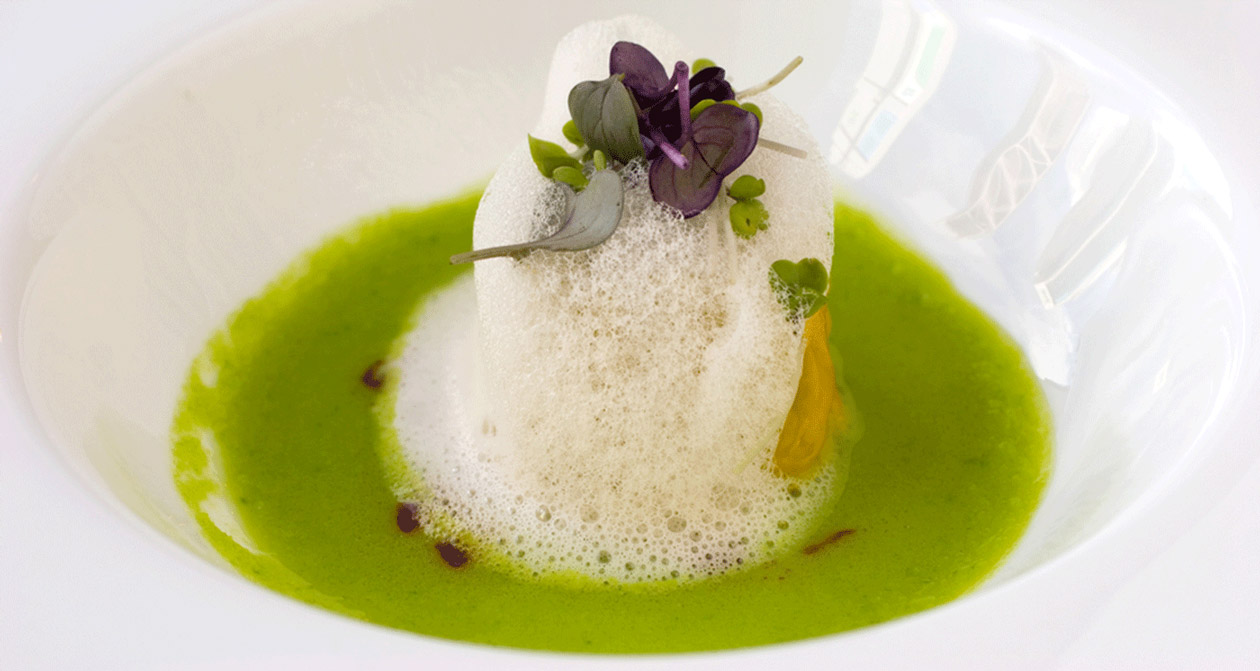Mousses
In the culinary world, foams and espumas are gaining in popularity. To create foams or a mousse, air or gas is mechanically pumped into a liquid. The addition of stabilisers helps to maintain the expansion1.The mixture then needs to be stabilised to hold it in place, otherwise the air will simply escape. Air is not retained in whisked water.
The stabilising agents are emulsifiers. These can be phospholipids (lipids containing phosphoric acid) such as soya lecithin or protein such as ovalbumin2 found in eggs. Interestingly, carrots also contain phospholipids. If air is pumped into carrot juice, the phospholipids in the cell membranes become active once the cell walls are mechanically broken down, creating a foam.
Siphons enable gas to be injected into a mixture. Air is incorporated when the mixture is expelled under pressure through the nozzle of the syphon. The airy texture can be maintained with the addition of a binding agent in the device. Thus emulsions, creams and mousses, as well as the renowned espumas of molecular cuisine, can all be created in a matter of seconds.











